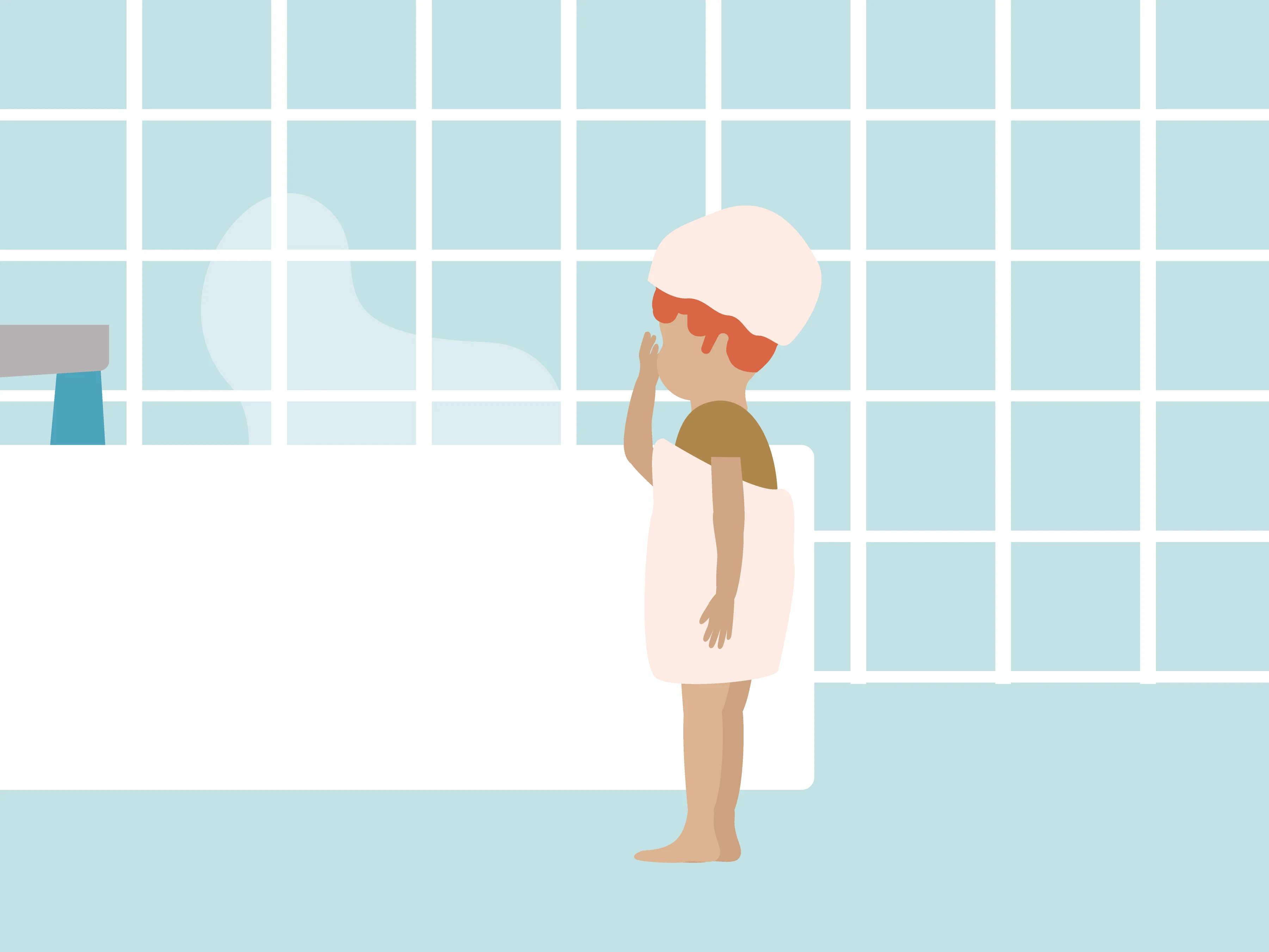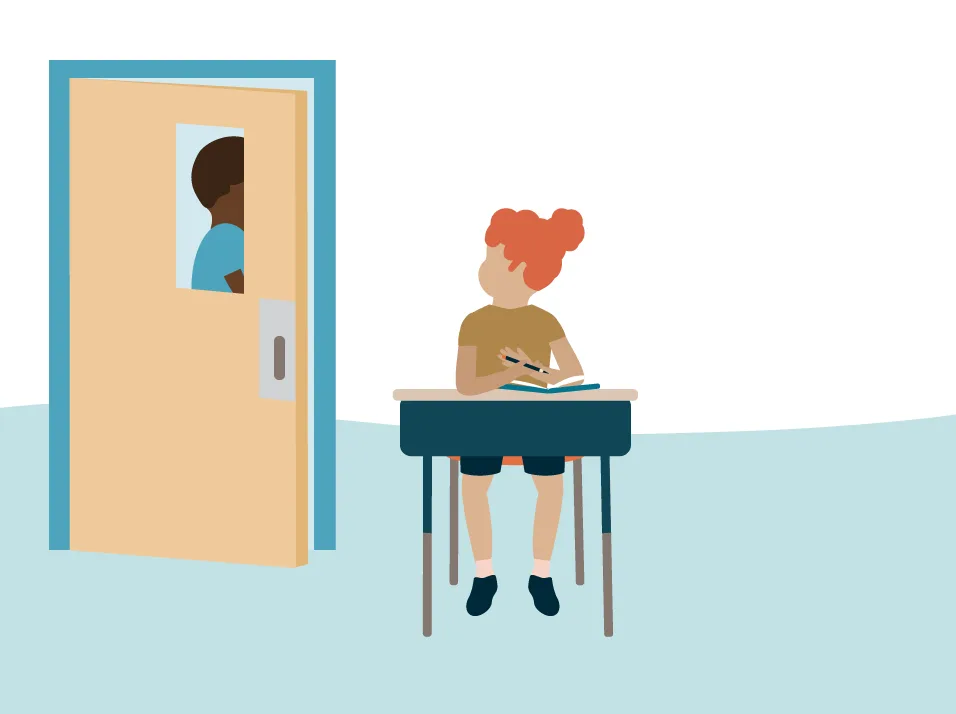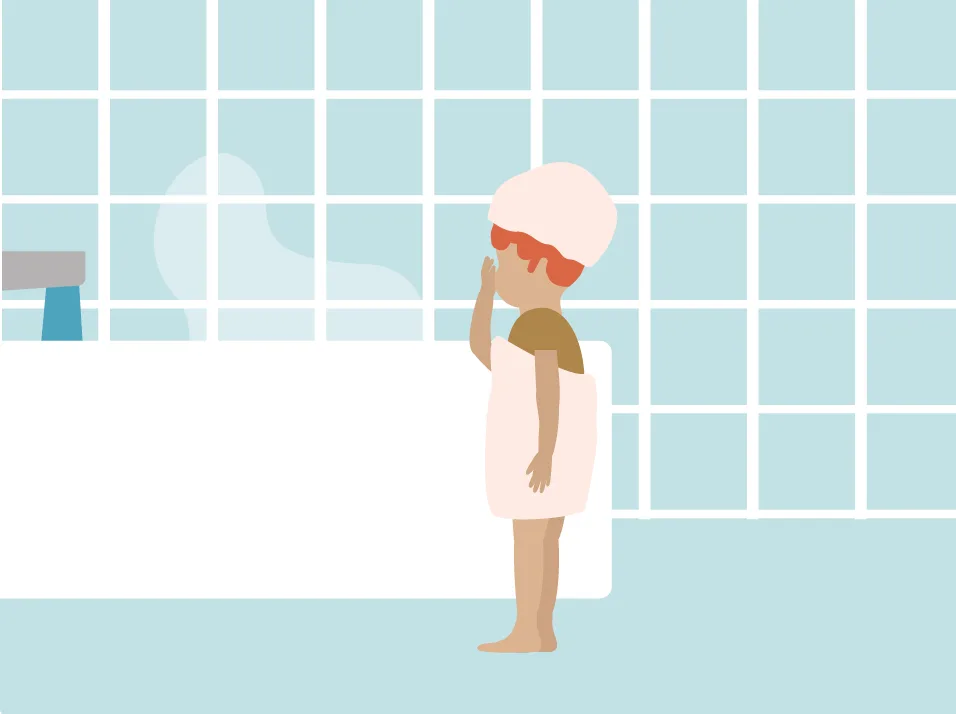A day in the life of a child with sensory processing challenges
Bright sunlight. Itchy clothing. Mushy food. Discover the ways sensory processing challenges impact a day in the life of a first grader.

Meet Olivia, a first grader with sensory processing challenges. She’s a bright kid. But her sensory differences are often misunderstood by teachers and family members.
People who have trouble managing everything their senses take in can be much more sensitive to what they hear, see, smell, taste, or touch. They can be much less sensitive, too. Like not noticing cold or pain. To see how these challenges can affect kids, take a look at a typical day in Olivia’s life.

6:14 a.m.
The sunlight coming through Olivia’s curtains wakes her up before her alarm. The light is bright and irritating. Olivia hides under the blankets. But she worries that if she falls back asleep, the loud beeping of her alarm clock will surprise her. She waits and turns it off a minute before the alarm goes off so she doesn’t have to deal with the noise.
Challenges related to sensory processing: Sensitivity to sound and sight

7 a.m.
Olivia puts on the clothes she picked out the night before. But the tags are too itchy. She insists on wearing her favorite soft T-shirt and leggings even though they’re dirty. At breakfast, Olivia wants the milk in a cup so she can pour it on her cereal a little at a time. Otherwise the flakes will get soggy and feel gross in her mouth.
Challenges related to sensory processing: Sensitivity to clothing and food textures

7:30 a.m.
Olivia needs to get to the bus stop on time, but she’s struggling to put on her coat and tie her shoes. She kind of hopes she’ll miss the bus. It’s always so loud and crowded. And it’s hard to find a seat where she won’t feel squished by other kids.
Challenges related to sensory processing: Trouble with motor skills, sensitivity to touch

10 a.m.
Olivia loves writing stories in school. But she keeps getting distracted when she sees other students walking down the hallway. She’s also feeling out of sorts and is having trouble staying in her seat. She asks her teacher if she can move to a desk away from the classroom door and put a wiggle cushion on her chair.
Challenges related to sensory processing: Sensitivity to sight, sensory-seeking

Noon
At lunchtime, the teacher doesn’t understand why Olivia won’t go into the cafeteria. The smell of meatball sandwiches doesn’t bother the teacher or the other kids. But Olivia gets overwhelmed by it — and also by trying to explain why she can’t go in. She has a meltdown and ends up eating in the school office after she calms down.
Challenges related to sensory processing: Sensitivity to smell, trouble controlling emotions

4 p.m.
At the playground, Olivia has fun climbing and jumping off the equipment and running around with her friends. She also loves doing somersaults on the grass. All that tumbling makes her feel calmer. When someone points out that her knee is scraped and bleeding, Olivia remembers that she fell down. But at the time it didn’t hurt, so she kept playing.
Challenges related to sensory processing: Seeking out sensations, being less sensitive to pain

6 p.m.
It’s taco night, but Olivia doesn’t like mixing all those textures and tastes. She keeps her favorite ingredients in different sections of her plate so she can eat them separately. When Mom tries to make her eat some refried beans, Olivia protests — she says mushy food makes her gag.
Challenges related to sensory processing: Sensitivity to taste and food textures

7:30 p.m.
Olivia keeps standing outside the shower because the water temperature isn’t right. Mom says it’s fine, but it feels too hot to Olivia. Plus, it’s a hair-washing night. That means slimy shampoo and painful combing afterward. Olivia starts to get upset, but she calms down when Mom says she can skip shampooing. She dries off using the fluffy towel she likes. Having toothpaste that isn’t “too spicy” also helps bedtime go more smoothly.
Challenges related to sensory processing: Sensitivity to touch (including gauging hot and cold)
About sensory processing challenges
Sensory challenges don’t just involve sights, sounds, textures, flavors, and smells. Kids like Olivia may have trouble knowing what’s going on inside their body, like not feeling pain or when their bladder is full. They may also have trouble with balance and movement.
Too much stimulation can lead to sensory overload. This makes it hard to regulate emotions, which can lead to meltdowns. Being bothered by things other people don’t even notice can be really frustrating, too. As the day goes on, it can get harder and harder for kids to cope.
Sensory processing challenges can exist on their own. People with ADHD, anxiety, or autism might struggle with them, too.
Explore ways to help kids manage sensory challenges at school. Learn about “sensory diets” and other ways to help.


